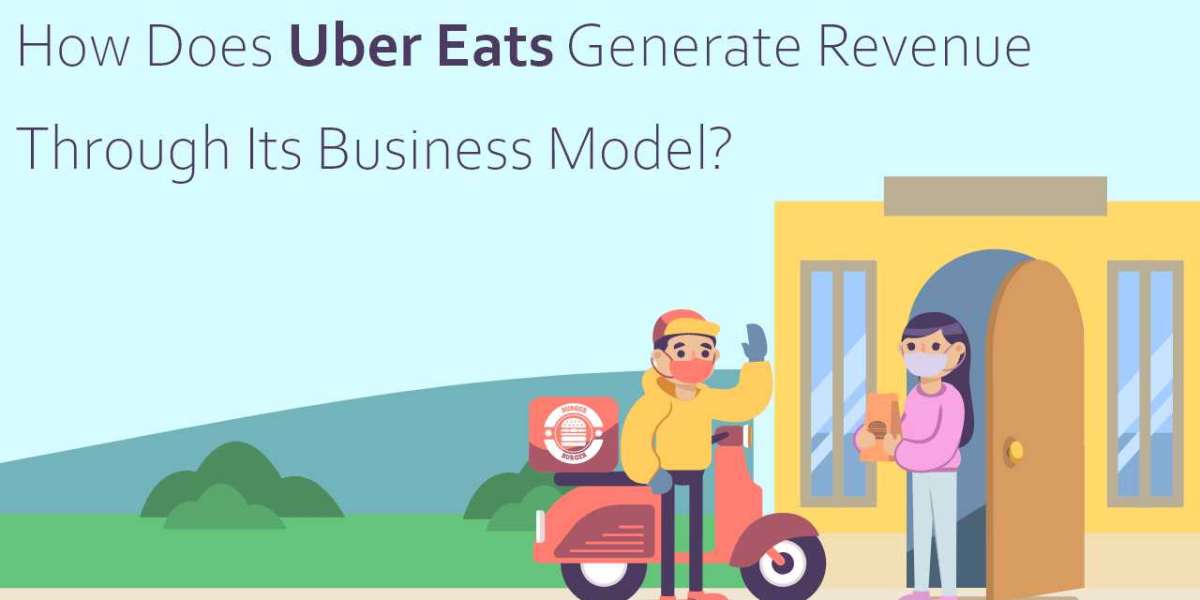Uber Eats, a prominent player in the food delivery industry, has revolutionized how people order and receive meals. By leveraging the vast infrastructure of its parent company, Uber, Uber Eats has carved out a significant niche in the competitive food delivery market. Its business model is multifaceted, generating revenue through several channels. In this article, we’ll explore the key components of Uber Eats business model and how they contribute to its financial success.
Revenue Streams of Uber Eats
Uber Eats generates revenue primarily through three major streams: delivery fees, service fees, and advertising. Each of these revenue channels plays a crucial role in sustaining the platform's operations and growth.
1. Delivery Fees
One of the primary sources of revenue for Uber Eats is the delivery fee charged to customers. When users place an order through the Uber Eats app, they pay a delivery fee that varies based on factors such as distance from the restaurant, order size, and local market conditions. This fee helps cover the costs associated with delivering the food, including the driver’s compensation and operational expenses. The delivery fee is a direct charge to customers, ensuring a steady inflow of revenue for Uber Eats.
2. Service Fees
In addition to delivery fees, Uber Eats charges restaurants a service fee. This fee is a percentage of the total order amount and is typically negotiated between Uber Eats and the restaurant partners. The service fee covers the costs of using the Uber Eats platform, including technology infrastructure, order processing, and customer support. By charging restaurants this fee, Uber Eats ensures that it has a steady revenue stream while providing restaurants with access to a large customer base and a sophisticated delivery network.
3. Advertising and Promotions
Uber Eats also generates revenue through advertising and promotional activities. Restaurants can pay to have their listings promoted within the app, increasing their visibility and potentially boosting their order volume. This form of advertising includes options such as featured placements, sponsored listings, and targeted promotions. Additionally, Uber Eats may offer promotional deals and discounts to customers, which can be sponsored by restaurants seeking to attract new customers or boost sales during specific periods.
Strategic Partnerships and Market Expansion
Uber Eats' business model is further enhanced by strategic partnerships and market expansion efforts. The platform has expanded its reach globally, entering new markets and forming partnerships with a wide range of restaurants. These partnerships not only increase the variety of options available to customers but also enhance Uber Eats' market presence.
1. Partnerships with Restaurants
By partnering with a diverse array of restaurants, from local eateries to large chains, Uber Eats broadens its appeal to a wide customer base. These partnerships often involve negotiated terms that include both service fees and promotional opportunities. Restaurants benefit from increased exposure and access to a new customer segment, while Uber Eats gains a larger inventory of dining options, making the platform more attractive to users.
2. Expansion into New Markets
Uber Eats continuously explores new markets and regions, adapting its business model to local conditions and consumer preferences. This expansion strategy helps the platform tap into emerging markets with high growth potential. By leveraging Uber's existing infrastructure and resources, Uber Eats can efficiently enter new areas, often gaining a competitive advantage over local or regional food delivery services.
Conclusion
Uber Eats revenue generation strategy is a complex interplay of delivery fees, service fees, and advertising. By charging customers for delivery, restaurants for platform use, and offering promotional opportunities, Uber Eats creates multiple revenue streams that support its operations and growth. Its strategic partnerships with restaurants and ongoing market expansion efforts further solidify its position in the food delivery industry. As the market continues to evolve, Uber Eats’ adaptive business model and innovative approach will likely play a significant role in shaping the future of food delivery services.






